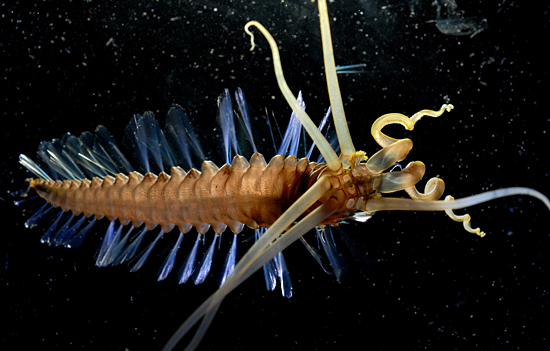
Posted on 17 December 2010 by RE Team
Alka, an elephant at the Orang National Park brings joy to wildlife animal lovers, as she created a history by giving birth to twins in the sanctuary on 15th December. Alka has engaged at the National Park to ferry thousands of tourists inside the wildlife sanctury for several years. Orang is situated in Assam, North-East India. The National Park, aka Rajib Gandhi National Park, is located on the north bank of the river Brahmaputra and around 150 km west of the capital city of the state Assam. It is home to rich flora and fauna, including the Great Indian One-Horned Rhinoceros, Pigmy hog, Elephants, Wild buffalo and Tigers.

Alka with her one day old little twins
The twin elephant calves, both female, were seen enjoying the warmth of their mother as Alka’s mahout Trailokya Bishya, who passed a sleepless night to protect the twins from the tigers, watched over them.
“I was on ambush duty in a camp a little away. Around 3 a.m. I heard Alka yelling in labour pain. At crack of dawn, when I reached her I was overjoyed to see that she had already given birth,” Mr. Baishya told. He lit a fire, preparing to guard the mother and the twins. Mr. Baishya was vigilant against possible tiger attacks. The 80-sq. km. park has an estimated 16 Royal Bengal Tigers.
Twins are extremely rare in the domesticated world of elephants. It is rare because a large-bodied animal would have to invest significantly higher effort to obtain nutritious food for twin foetuses. It is more likely to occur in wild elephants who have access to both wild food as well as cultivated crops which are more nutritious.
India has recorded Elephant twins birth more than a decade ago in Mudumalai wildlife sanctuary in Tamil Nadu. 2010 turns out to be an exceptional year for Elephants as this is the second report of Elephant twins in the same year. Early this year, Phang Thong Khun, an elephant from Thailand gave birth to male twins.

Posted on 06 December 2010 by RE Team
“This illustrates how much we have to learn about even the large, common inhabitants of deep pelagic communities,” said Woods Hole Oceanographic Institute in Massachusetts and the Scripps Institute of Oceanography.
“When the image came onto the screen, everyone said, Oh my gosh, what’s that?” recalled marine zoologist Laurence Madin of the Woods Hole Oceanographic Institution in Massachusetts.
“This is an intermediate species between the benthic ancestors — things living in the mud on the seafloor — and other species that live in the water column but never go to the floor,” said Karen Osborn, an evolutionary biologist at the University of California, Santa Cruz. ”I was really excited,” Osborn added, “It was so tantalizing because the animal was so different from anything previously described, with the fantastic headgear. I would estimate that when exploring the deep water column, more than half the animals we see are undescribed or new to science.”

Squidworm
These are some of the examples of excitements among the scientists after the discovery of a new species under ocean water named as Squidworm. This species is neither a squid nor a worm. It is an especially exciting discovery because the species could represent a missing link, or transitional species.
Scientists at the Woods Hole Oceanographic Institute and the University of California, Santa Cruz have recently discovered the squidworm at around 3000 meters under ocean water, just above the ocean floor. The scientists used a remotely operated submersible robot to find squid. The species is named asTeuthidodrilus samae, or “squid worm of the Sama”—the Sama being a culture with ties to Philippine islands not far from the discovery site.
The Squidworm grows up to 9.4 centimeters (3.7 inches) in length. Swimming upright, it navigates by moving two body-length rows of thin, paddle-shaped protrusions that cascade like dominoes. It has ten tentacles as long or longer than its body stick out of its head, along with six pairs of curved nuchal organs that allow the squidworm to taste and smell underwater.




Recent Comments